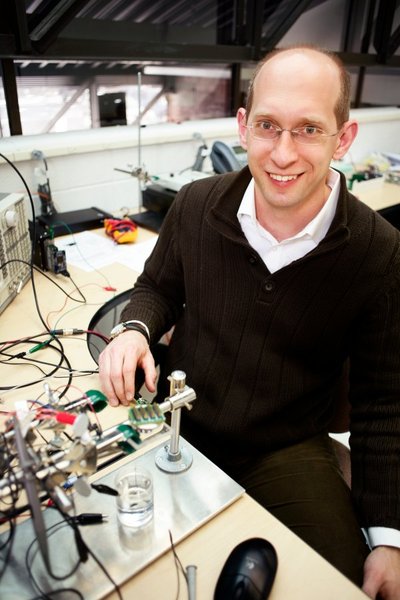Implanting electronics into the brain
If you’re thinking about the ‘Six Million Dollar Man’, you’re not entirely off base. University of Utah electrical engineering professor Florian Solzbacher is pushing the boundaries of electrical devices that can be implanted into the brain and used as an interface between neurons and computers. Solzbacher is helping turn science fiction into reality through his research and related start-up companies.
Solzbacher’s research builds on Utah Electrode Array (‘Utah Array’) technologies, which were invented by another University of Utah professor, Richard Normann, and are recognised as the leading approach for selective communication with hundreds of neurons in the central and peripheral nervous systems. The Utah Array is a computer chip that is implanted in, and takes signals from, the brain. It transmits them in a way a computer can understand - in short, a neural interface. Solzbacher has improved how the chip works and pioneered its applications.
“We are making things work,” says Solzbacher. “People have had the idea to invent better technologies like ours for years, but we are the first to make them work and get them into patients. There are over 10,000 labs worldwide that can make things with our technologies, and they, in turn, pull us in and involve us in theirs.”

Solzbacher is commercialising his research through start-up company Blackrock Microsystems and sister company Blackrock NeuroMed. Both firms employ a combined 50 people and are selling their neural interface technologies and related tools to researchers and companies around the globe. Their customers are using the technologies to find new approaches for treating nervous system disorders such as blindness, deafness, Parkinson’s and epilepsy, while another set of clients is using them to control prosthetic limbs.
Marking the continued success of Solzbacher’s research, his start-up companies are moving into a new $11 million facility at the University of Utah’s Research Park. The 5574-square-metre building features a cleanroom and state-of-the-art energy efficiency. It’s being constructed in partnership with Woodbury Corporation and will help Solzbacher’s companies continue innovating and fulfilling worldwide demand for the advanced neuroscience technology they produce.
A new class of silicon systems for AI connected devices
Researchers from Singapore have demonstrated a new class of silicon systems that could enhance...
When does a conductor not conduct?
Researchers have found unusual insulating behaviour in a new atomically thin material — and...
New 300 GHz transmitter enhances 6G and radar technologies
Researchers have developed an innovative 300 GHz-band transmitter for advanced 6G wireless...










